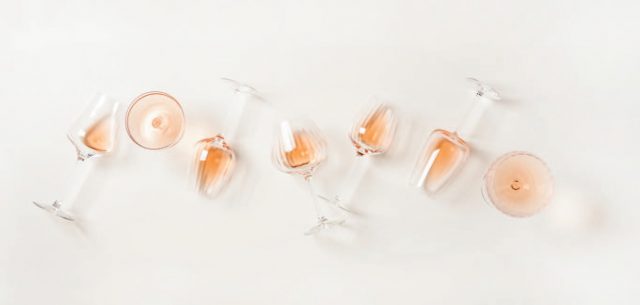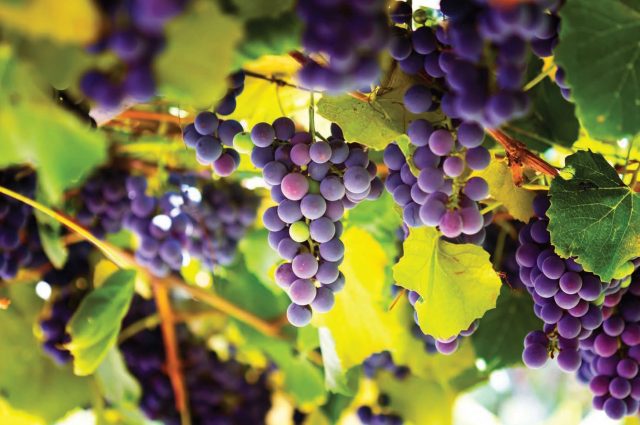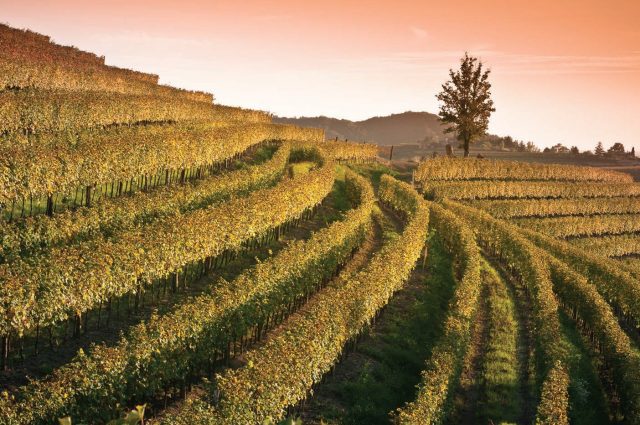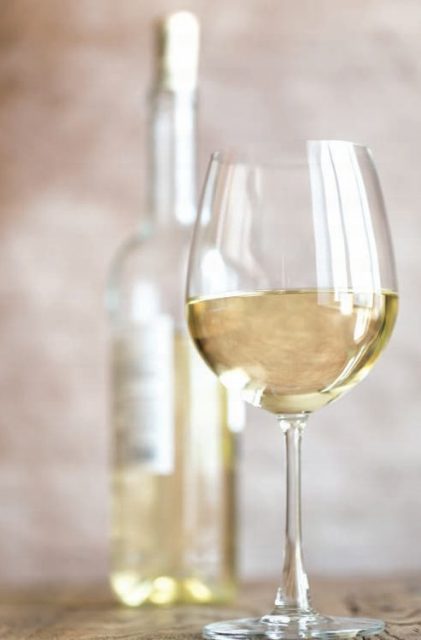Following judging in June, we are able to reveal the full list of medal-winning wines from this year’s Global Rosé Masters, featuring outstanding wines from Hampshire to Rioja, and Sicily to Santorini, as well as, of course, Provence.
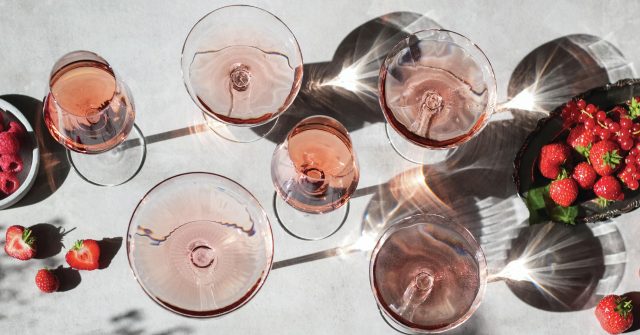
IN KEEPING with our Global Masters series, our competition for rosé brought in wines from a broad range of locations. While it was, as one might expect, those from increasingly popular Côtes de Provence that dominated, both in terms of number of entries, and Gold medallists, we did see greatness elsewhere, often with a pleasingly distinctive character too. After all, there’s little point creating something that can be done just as well in Provence, unless your aim is simply to do the same, but cheaper
As for those sources of brilliance from beyond the borders of Côtes de Provence, our shining examples in 2022 hailed from Spain, Italy and Greece, as you can see among the highlighted bottles over the following pages. Nevertheless, the highest-scorers of the competition were barrel-influenced rosés from Provence, made using Grenache and Rolle, which now seem to sit atop the pink wine pyramid like Chardonnay-Pinot Noir prestige cuvée blends from Champagne.
But beneath such high points we found much variation in style and quality. Disappointments came primarily among the samples in the £15-20 price bracket, where the judges would have liked to have seen see more colour and fruit flavours, as well as less reduction – smoky, rubbery, burnt-match sulphidic aromas were present in some samples. In certain cases, dilution was an issue, but rarely did we see any overripeness in today’s rosés – the pendulum has well and truly swung away from jammy flavours towards the lean, and sometime green, when it comes to pink wine.
Commenting on the difference between the top end of the rosé category compared to the lower end, long-standing Global Wine Masters judge Patricia Stefanowicz MW suggested that maybe not enough time is being devoted to the entry-point offerings in this sector.
Noting that “oaked dry rosés fared well”, she said: “Maybe winemakers are more willing to spend a little more time and effort on these wines to obtain balance and interest rather than the ‘quick, cool, gentle’ attempts to get the wine in bottle and on the shelf as soon as harvested?”
Nevertheless, as the following results show, there were plenty of wines that managed to both look and taste good. And, not all of these were from the fashionable southern coast of France.
Please read on to find out more about The Global Rosé Masters, as well as to see all the medal-winning wines from this year’s competition, starting with sparkling rosés, and then onto still wines, which are arranged according to price band and style (dry, off-dry, oaked).
| Winery | Name of Wine | Region | Country | Vintage | Medal | ||||||||||
| Dry Sparkling Rosé | |||||||||||||||
| Under £10 | |||||||||||||||
| Privat | Privat Brut Nature Reserva Rosé | Cava | Spain | 2019 | Bronze | ||||||||||
| £10-£15 | |||||||||||||||
| La Marca Vini e Spumanti | Millage Prosecco DOC Rosé Millesimato Brut | Veneto | Italy | 2021 | Gold | ||||||||||
| Domaine d’Aussières | “A” d’Aussières Rosé | Pays d’Oc | France | 2021 | Silver | ||||||||||
| Viña Valdivieso | Eclat Brut Rosé Cinsault | Itata Valley | Chile | NV | Silver | ||||||||||
| Valdo Spumanti | Valdo Paradise Rosé Brut | Veneto and Sicily | Italy | NV | Silver | ||||||||||
| La Marca Vini e Spumanti | La Marca Prosecco DOC Rosé Millesimato Extra Dry | Veneto | Italy | 2021 | Silver | ||||||||||
| Valdo Spumanti | Valdo Marca Oro Prosecco DOC Rosé Brut | Veneto | Italy | NV | Silver | ||||||||||
| Codorníu | Cuvée Original Rosé | Catalan | Spain | NV | Bronze | ||||||||||
| Sogrape Vinhos | Mateus Sparkling Brut Rosé | Douro | Portugal | NV | Bronze | ||||||||||
| £15-£20 | |||||||||||||||
| Bortoluzzi Wines | Rosa di Gemina | Friuli-Venezia Giulia | Italy | 2021 | Gold | ||||||||||
| La Cantina Pizzolato | “M-Use” Spumante Rosato Extra Dry | Veneto | Italy | 2021 | Gold | ||||||||||
| Maison Louis Bouillot | Perle d’Aurore | Burgundy | France | NV | Silver | ||||||||||
| Cantina Montelliana | “Meliora 210” Prosecco Rosé DOC Brut Millesimato | Veneto | Italy | 2020 | Bronze | ||||||||||
| Codorníu | Ars Collecta Grand Rosé Reserva | Catalan | Spain | 2019 | Bronze | ||||||||||
| SIdewood Estate | Sparkling Pinot Rosé | Adelaide Hills | Australia | NV | Bronze | ||||||||||
| £20-£30 | |||||||||||||||
| Sidewood Estate | Sidewood Isabella Rosé Sparkling | Adelaide Hills | Australia | 2015 | Gold | ||||||||||
| Champagne Haton | Rosé | Champagne | France | NV | Gold | ||||||||||
| Colesel Spumanti | Pavana Rosé | Veneto | Italy | 2020 | Silver | ||||||||||
| Matahiwi Vineyards | Matahiwi Estate Brut Rosé | Wairarapa | New Zealand | NV | Silver | ||||||||||
| La Cantina Pizzolato | Vino Frizzante IGT Veneto col Fondo PIWI “Hurrà” | Veneto | Italy | 2020 | Bronze | ||||||||||
| £30-£50 | |||||||||||||||
| Comtes de Dampierre | Cuvée des Ambassadeurs Brut Rosé Premier Cru | Champagne | France | NV | Master | ||||||||||
| Hattingley Valley Wines | Hattingley Valley Sparkling Rosé | Hampshire | UK | 2018 | Gold | ||||||||||
| Champagne Haton | Rosé Extra Grand Cru | Champagne | France | NV | Silver | ||||||||||
| Champagne Nicolas Feuillatte | Réserve Exclusive Rosé | Champagne | France | NV | Silver | ||||||||||
| Hambledon Vineyard | Hambledon Classic Cuvée Rosé | Hampshire | UK | NV | Silver | ||||||||||
| Champagne Ayala | Ayala Brut Majeur Rosé | Champagne | France | NV | Silver | ||||||||||
| Champagne Nicolas Feuillatte | Cuvée Spéciale Rosé | Champagne | France | NV | Bronze | ||||||||||
| Champagne Gremillet | Rosé Vrai | France | France | NV | Bronze | ||||||||||
| £100+ | |||||||||||||||
| Champagne Nicolas Feuillatte | Palmes d’Or Rosé Vintage | Champagne | France | 2008 | Gold | ||||||||||
| Winery | Name of Wine | Region | Country | Vintage | Medal | ||||||||||
| Sweet Sparkling Rosé | |||||||||||||||
| Under £10 | |||||||||||||||
| Casa Vinicola Abbazia di San Gaudenzio | Abbazia Moscato Spuamnte Rosé “Fortuna” | Piedmont | Italy | 2021 | Bronze | ||||||||||
| EnoItalia | Belvino Rosé Spumante | Veneto | Italy | NV | Bronze | ||||||||||
| £10-£15 | |||||||||||||||
| De Bortoli Wines | De Bortoli Petit Moscato | Rutherglen | Australia | NV | Silver | ||||||||||
| Perlage | Afra Prosecco Treveso DOC | Veneto | Italy | 2021 | Bronze | ||||||||||
| Bosco Viticultori | Prosecco Spumante Rosé DOC Extra Dry | Veneto | Italy | 2021 | Bronze | ||||||||||
| £15-£20 | |||||||||||||||
| Val d’Oca | Prosecco DOC Treviso Rosé Extra Dry Millesimato | Veneto | Italy | 2020 | Bronze | ||||||||||
| £20-£30 | |||||||||||||||
| Foss Marai | Della Vite Millesimato DOC Prosecco Rosé | Treviso | Italy | 2021 | Silver | ||||||||||
| 3GP | FIOL Prosecco DOC Rosé | Treviso | Italy | 2021 | Bronze | ||||||||||
| Winery | Name of Wine | Region | Country | Vintage | Medal | ||||||||||
| Still Unoaked Dry Rosé | |||||||||||||||
| Under £10 | |||||||||||||||
| Bodegas Marqués de Cáceres | Rosado | Rioja | Spain | 2021 | Gold | ||||||||||
| Petricek | Niederösterreich Rosé Zweigelt Primeur | Niederösterreich | Austria | 2021 | Gold | ||||||||||
| Baron Philippe de Rothschild | Mouton Cadet | Bordeaux | France | 2021 | Gold | ||||||||||
| Bodega Inurrieta | Inurrieta Mediodia | Navarra | Spain | 2021 | Silver | ||||||||||
| Les Vignobles Foncalieu | Le Versant Limited Edition | Languedoc-Roussillon | France | 2021 | Silver | ||||||||||
| Barton & Guestier | B&G Rosé Réserve | Languedoc-Roussillon | France | 2021 | Silver | ||||||||||
| Bodegas Gran Feudo | Gran Feudo Rosado | Navarra | Spain | 2021 | Silver | ||||||||||
| Félix Solís Avantis | Viña Albali Rosé | Castilla-La Mancha | Spain | 2021 | Silver | ||||||||||
| Distell | Nederburg Winemasters Rosé | Western Cape | South Africa | 2021 | Silver | ||||||||||
| Distell | Durbanville Hills Merlot Rosé | Western Cape | South Africa | 2021 | Silver | ||||||||||
| La Vieille Ferme | Rosé | Rhône | France | 2021 | Silver | ||||||||||
| Laroche | Rosé | Languedoc-Roussillon | France | 2021 | Silver | ||||||||||
| Bijou | Le Bijou de Sophie Valrose Rosé | Languedoc-Roussillon | France | 2021 | Bronze | ||||||||||
| Gıdatay | Prodom Rosé | Aegean | Turkey | 2021 | Bronze | ||||||||||
| Bodegas Alceño | Alceño Rosado | Jumilla | Spain | 2021 | Bronze | ||||||||||
| Bodegas Ontalba | Dominio de Ontur Syrah Rosado | Jumilla | Spain | 2021 | Bronze | ||||||||||
| Sogrape Vinhos | Mateus Dry Rosé | Alentejo | Portugal | 2021 | Bronze | ||||||||||
| Steininger | Niederösterreich Rosé Merlot | Niederösterreich | Austria | 2020 | Bronze | ||||||||||
| Pagos del Rey | Arnegui Rosado | Rioja | Spain | 2021 | Bronze | ||||||||||
| Félix Solís Avantis | Mucho Mas Rosé | Spain | Spain | NV | Bronze | ||||||||||
| Bodegas Luzón | Luzón Colección Rosado | Jumilla | Spain | 2021 | Bronze | ||||||||||
| Bodegas Carchelo | Carchelo Rosé | Jumilla | Spain | 2021 | Bronze | ||||||||||
| Bodegas BSI | Genus Rosé | Jumilla | Spain | 2021 | Bronze | ||||||||||
| Jacob’s Creek | LePetit Rosé | Australia | Australia | 2021 | Bronze | ||||||||||
| Hammeken Cellars | Mirada Organic Rosé | Castilla y León | Spain | 2021 | Bronze | ||||||||||
| Cavit | Terrazze Della Luna Pinot Grigio Rosato Vigneti delle Dolomiti IGT | Trentino | Italy | 2021 | Bronze | ||||||||||
| Bijou | Terre de Providence | Languedoc-Roussillon | France | 2021 | Bronze | ||||||||||
| £10-£15 | |||||||||||||||
| Domaine Royal de Jarras | Tête de Cuvée Gris de Gris Bio | Camargue | France | 2021 | Gold | ||||||||||
| Bodegas Izadi | Izadi Larrosa Rosé | Rioja | Spain | 2021 | Gold | ||||||||||
| Invivo & Co | Invivo X, SJP Rosé | Provence | France | 2021 | Gold | ||||||||||
| Domaine de l’Amaurigue | Rosé | Provence | France | 2021 | Silver | ||||||||||
| Chateau des Demoiselles | Charme des Demoiselles | Provence | France | 2021 | Silver | ||||||||||
| Maison Mirabeau | Mirabeau X | Provence | France | 2021 | Silver | ||||||||||
| Domaine Skouras | Cuvée Prestige Rosé | Argolida | Greece | 2021 | Silver | ||||||||||
| SeaGlass Wine Company | SeaGlass Rosé | Monterey County | USA | 2020 | Silver | ||||||||||
| De Bortoli Wines | De Bortoli Rosé Rosé | King Valley | Australia | 2021 | Silver | ||||||||||
| Les Vignobles Foncalieu | Cardounettes | Languedoc-Roussillon | France | 2021 | Silver | ||||||||||
| Saint-Roux | Friponne | Provence | France | 2021 | Silver | ||||||||||
| Planeta | Rosé | Sicily | Italy | 2021 | Silver | ||||||||||
| Bodegas Marqués de Cáceres | Excellens de Marqués de Cáceres Rosé | Rioja | Spain | 2021 | Silver | ||||||||||
| Bodegas Olivares | Olivares Rosado | Jumilla | Spain | 2021 | Silver | ||||||||||
| Moulin de Gassac | Guilhem Rosé | Languedoc-Roussillon | France | 2021 | Silver | ||||||||||
| Bodegas Bilbaínas | Viña Pomal Rosé | Rioja | Spain | 2021 | Silver | ||||||||||
| Portal del Montsant | Brunus Rosé | Catalan | Spain | 2021 | Silver | ||||||||||
| Born Brands | Born Rosé Barcelona | Penedès | Spain | 2021 | Silver | ||||||||||
| Maison Mirabeau | Mirabeau Classic | Provence | France | 2021 | Silver | ||||||||||
| Susana Balbo | Crios | Uco Valley | Argentina | 2021 | Silver | ||||||||||
| Bodegas Pío Del Ramo | ‘Betola The Cat Wine’ Rosé | Jumilla | Spain | 2021 | Silver | ||||||||||
| Bieler Family Wines | Charles & Charles Rosé | Columbia Valley | USA | 2020 | Silver | ||||||||||
| Conti di San Bonifacio | Rosé IGT Toscana | Tuscany | Italy | 2021 | Silver | ||||||||||
| Wakefield/Taylors Wines | Estate Pinot Noir Rosé | Adelaide Hills | Australia | 2021 | Bronze | ||||||||||
| Holden Manz | Hiro Rosé | Franschhoek | South Africa | 2021 | Bronze | ||||||||||
| Marisco Vineyards | The Ned Rosé | Marlborough | New Zealand | 2021 | Bronze | ||||||||||
| Beronia | Beronia Rioja Rosé | Rioja | Spain | 2021 | Bronze | ||||||||||
| Veramonte | Reserva Rosé Syrah Organic | Casablanca Valley | Chile | 2020 | Bronze | ||||||||||
| Bodegas Silvano García | Silvano García Pink | Jumilla | Spain | 2021 | Bronze | ||||||||||
| Domaine Royal de Jarras | Pink Flamingo Gris Tête De Cuvée Bio | Languedoc-Roussillon | France | 2021 | Bronze | ||||||||||
| Miraval Provence | Studio by Miraval Rosé | Provence | France | 2021 | Bronze | ||||||||||
| Viña Casablanca | Céfiro Rosé | Casablanca Valley | Chile | 2021 | Bronze | ||||||||||
| Concha y Toro | Casillero del Diablo | Chile | Chile | 2021 | Bronze | ||||||||||
| Dievole | Le Due Arbie Rosato Toscana IGT | Tuscany | Italy | 2021 | Bronze | ||||||||||
| Joel Gott Wines | Joel Gott Rosé | Central Coast | USA | 2020 | Bronze | ||||||||||
| Bodega TorreCastillo | TorreCastillo Rosado | Jumilla | Spain | 2021 | Bronze | ||||||||||
| Bodegas Bleda | Castillo De Jumilla Rosado | Jumilla | Spain | 2021 | Bronze | ||||||||||
| Cielo e Terra | Bericanto Rosato DOC Vicenza | Veneto | Italy | 2021 | Bronze | ||||||||||
| Moulin de Gassac | Grande Réserve de Gassac Rosé | Languedoc-Roussillon | France | 2021 | Bronze | ||||||||||
| Marisco Vineyards | Leefield Station Pinot Rosé | Marlborough | New Zealand | 2021 | Bronze | ||||||||||
| Maison Mirabeau | Belle Année | France | France | 2021 | Bronze | ||||||||||
| Castillo de Ibiza | Castillo de Ibiza Rosé | Navarra | Spain | 2021 | Bronze | ||||||||||
| Gérard Bertrand | Gris Blanc | Languedoc-Roussillon | France | 2021 | Bronze | ||||||||||
| Les Vignobles Foncalieu | Piquepoul | Languedoc-Roussillon | France | 2021 | Bronze | ||||||||||
| Pasqua Vigneti e Cantine Spa | 11 Minutes Rosé Trevenezie IGT | Veneto | Italy | 2021 | Bronze | ||||||||||
| Barton & Guestier | B&G Côtes de Provence Rosé | Provence | France | 2021 | Bronze | ||||||||||
| Buontalenti | Gordon Ramsay Elegante Roasto | Abruzzo | Italy | 2020 | Bronze | ||||||||||
| £15-£20 | |||||||||||||||
| Château la Gordonne | Summertime BIO | Provence | France | 2021 | Master | ||||||||||
| Domaine Royal de Jarras | Favet 9/10 Domaine Royal de Jarras Tête De Cuvée Bio | Sable de Camargue | France | 2020 | Gold | ||||||||||
| Famille Sumeire | Château Coussin | Provence | France | 2021 | Gold | ||||||||||
| LGI Wines | Kylie Minogue Collection Côtes de Provence Rosé | Provence | France | 2021 | Gold | ||||||||||
| Caves d’Esclans | Whispering Angel | Provence | France | 2021 | Gold | ||||||||||
| J. Chivite Family Estates | Chivite Las Fincas Rosado | Ribera del Duero | Spain | 2021 | Gold | ||||||||||
| Torre Mora | Scalunera Etna Rosato | Sicily | Italy | 2021 | Gold | ||||||||||
| Les Vignobles André Lurton | Diane by Jacques Lurton Rosé | Bordeaux | France | 2021 | Gold | ||||||||||
| Château Sainte Roseline | Lampe de Meduse Cru Classé | Provence | France | 2021 | Silver | ||||||||||
| Domaine de l’Amaurigue | Rosé Fleur de l’Amaurigue | Provence | France | 2021 | Silver | ||||||||||
| Maison Mirabeau | Mirabeau Etoile | Provence | France | 2021 | Silver | ||||||||||
| Avantis Estate | Lenga Pink | Evia | Greece | 2021 | Silver | ||||||||||
| Château des Demoiselles | Château des Demoiselles | Provence | France | 2021 | Silver | ||||||||||
| Famille Sumeire | Château Maupague | Provence | France | 2021 | Silver | ||||||||||
| Domaine St Jean de Villecroze | Selladore En Provence | Provence | France | 2021 | Silver | ||||||||||
| Villa Bogdano 1880 | Pinot Grigio Ramato DOC Venezia | Veneto | Italy | 2020 | Silver | ||||||||||
| Res Fortes Wines | Res Fortes Rosé | Languedoc-Roussillon | France | 2021 | Silver | ||||||||||
| Famille Sumeire | Château La Jouliane | Provence | France | 2021 | Silver | ||||||||||
| Domaine la Grande Bauquiere | Moment Inattendu | Provence | France | 2021 | Silver | ||||||||||
| Feudi di San Gregorio | VIsione | Campania | Italy | 2021 | Silver | ||||||||||
| Château de Berne | Terres de Berne | Provence | France | 2021 | Silver | ||||||||||
| Vaglio | Vaglio | Uco Valley | Argentina | 2021 | Silver | ||||||||||
| Maison Mirabeau | Azure | Provence | France | 2021 | Silver | ||||||||||
| Masciarelli | Villa Gemma Cerasuolo d’Abruzzo DOC | Abruzzo | Italy | 2021 | Silver | ||||||||||
| Folc | Folc English Rosé | Kent | UK | 2020 | Bronze | ||||||||||
| Justino’s Madeira Wines | Colombo Rosé DOP Madeirense | Madeira | Portugal | NV | Bronze | ||||||||||
| Rioja Vega | Rosado Colección Tempranillo | Rioja | Spain | 2021 | Bronze | ||||||||||
| Les Vignobles Foncalieu | Château Haut Gléon | Languedoc-Roussillon | France | 2021 | Bronze | ||||||||||
| Matahiwi Vineyards | Matahiwi Estate Pinot Rosé | Wairarapa | New Zealand | 2021 | Bronze | ||||||||||
| Santa Carolina | Carolina Collection Series | Maule | Chile | 2021 | Bronze | ||||||||||
| Château la Gordonne | Vérité du Terroir BIO | Provence | France | 2021 | Bronze | ||||||||||
| Château Léoube | Rosé de Léoube | Provence | France | 2021 | Bronze | ||||||||||
| Léoube | Love by Léoube Rosé | Provence | France | 2021 | Bronze | ||||||||||
| Maison Mirabeau | Mirabeau Pure | Provence | France | 2021 | Bronze | ||||||||||
| £20-£30 | |||||||||||||||
| Domaines Ott | By.Ott | Provence | France | 2021 | Master | ||||||||||
| Ultimate Provence | Ultimate Provence | Provence | France | 2021 | Master | ||||||||||
| Anhydrous Winery | Grance | Santorini | Greece | 2021 | Gold | ||||||||||
| Maison Gutowski | Grande Cuvée | Provence | France | 2021 | Gold | ||||||||||
| Attems | Pinot Grigio Ramato | Friuli | Italy | 2021 | Gold | ||||||||||
| Miraval Provence | Miraval St Victoire | Provence | France | 2021 | Silver | ||||||||||
| Miraval Provence | Miraval Rosé | Provence | France | 2021 | Silver | ||||||||||
| Alpha Estate | Rosé Single Vineyard Hedgehog | Florina | Greece | 2021 | Silver | ||||||||||
| Famille Sumeire | César à Sumeire Coussin | Provence | France | 2021 | Silver | ||||||||||
| Hammeken Cellars | Ecologica Girasol Rosé Organic | Castile-León | Spain | 2021 | Silver | ||||||||||
| Fantinel | Sun Goddess Pinot Grigio Ramato DOC Friuli | Friuli-Venezia Giulia | Italy | 2021 | Silver | ||||||||||
| Château la Gordonne | La Chapelle Gordonne Tête de Cuvée Bio | Provence | France | 2021 | Silver | ||||||||||
| Famille Sumeire | Château l’Afrique | Provence | France | 2021 | Bronze | ||||||||||
| Dominio de Punctum | 99 Rosas Rosé Organic | Castile-León | Spain | 2021 | Bronze | ||||||||||
| Domaine Beauvence | L’Originelle | Provence | France | 2021 | Bronze | ||||||||||
| Susana Balbo | Signature | Uco Valley | Argentina | 2021 | Bronze | ||||||||||
| Rumor | Rosé | Provence | France | 2021 | Bronze | ||||||||||
| £30-£50 | |||||||||||||||
| Château la Gordonne | Le Cirque des Grives | Provence | France | 2019 | Gold | ||||||||||
| Château Léoube | Secret de Léoube | Provence | France | 2021 | Gold | ||||||||||
| Domaine Beauvence | Bellimontis | Provence | France | 2021 | Silver | ||||||||||
| Maison Gutowski | Réserve | Provence | France | 2021 | Silver | ||||||||||
| Winery | Name of Wine | Region | Country | Vintage | Medal | ||||||||||
| Unoaked Medium-Dry Rosé | |||||||||||||||
| Under £10 | |||||||||||||||
| Piccini | Costa Toscana Rosato Organic | Tuscany | Italy | 2021 | Gold | ||||||||||
| Cono Sur | Bicicleta Pinot Noir Rosé | Bío Bío Valley | Chile | 2021 | Gold | ||||||||||
| Pasqua Vigneti e Cantine | Chiaretto di Bardolino DOC Classico | Veneto | Italy | 2021 | Silver | ||||||||||
| Cramele Recas | Sole Roze | Recas | Romania | 2021 | Silver | ||||||||||
| The Iconic Estate | Byzantium Rose | Dealu Mare | Romania | 2021 | Silver | ||||||||||
| Cramele Recas | Muse Night Roze | Recas | Romania | 2021 | Silver | ||||||||||
| Viña Concha y Toro | Frontera Rosé | Santiago | Chile | 2021 | Bronze | ||||||||||
| The Iconic Estate | Prahova Valley Merlot Rosé | Dealu Mare | Romania | 2021 | Bronze | ||||||||||
| Schenk Italia | Masso Antico Primitivo del Salento IGT Rosato | Puglia | Italy | 2021 | Bronze | ||||||||||
| Schenk Italia | Amicone Pinot Grigio delle Venezie Doc Rosé | Veneto | Italy | 2021 | Bronze | ||||||||||
| Enoitalia Spa | VOGA Italia | Veneto | Italy | 2021 | Bronze | ||||||||||
| Cramele Recas | Vara Rose | Recas | Romania | 2021 | Bronze | ||||||||||
| Cramele Recas | Solara Roze | Recas | Romania | 2021 | Bronze | ||||||||||
| £10-£15 | |||||||||||||||
| Cantine San Marzano | Tramari Rosé di Primitivo Salento IGP | Puglia | Italy | 2021 | Bronze | ||||||||||
| Winery | Name of Wine | Region | Country | Vintage | Medal | ||||||||||
| Unoaked Sweet Rosé | |||||||||||||||
| Under £10 | |||||||||||||||
| Sula Vineyards | Sula Zinfandel Rose | Nashik | India | 2021 | Bronze | ||||||||||
| Viña Concha y Toro | Reservado | Santiago | Chile | 2021 | Bronze | ||||||||||
| Julià & Navinès | Ecologica La Pluma Rosé | Penedès | Spain | 2021 | Bronze | ||||||||||
| Sogrape Vinhos | Mateus Rosé Original | Alentejo | Portugal | NV | Bronze | ||||||||||
| Winery | Name of Wine | Region | Country | Vintage | Medal | ||||||||||
| Oaked Dry Rosé | |||||||||||||||
| Under £10 | |||||||||||||||
| Finca El Origen | Rosé | Uco Valley | Argentina | 2021 | Bronze | ||||||||||
| £10-£15 | |||||||||||||||
| Gérard Bertrand | Côte des Roses | Languedoc-Roussillon | France | 2021 | Gold | ||||||||||
| Bijou | Éminence de Bijou | Languedoc-Roussillon | France | 2021 | Bronze | ||||||||||
| £15-£20 | |||||||||||||||
| Gérard Bertrand | Hampton Water | Languedoc-Roussillon | France | 2021 | Gold | ||||||||||
| Gérard Bertrand | Source of Joy | Languedoc-Roussillon | France | 2021 | Gold | ||||||||||
| Château de Berne | La Grande Cuvée | Provence | France | 2021 | Silver | ||||||||||
| Bodegas Juan Gil | Juan Gil Rosado | Jumilla | Spain | 2021 | Silver | ||||||||||
| Marisco Vineyards | The Kings Desire Pinot Noir Rosé | Marlborough | New Zealand | 2021 | Silver | ||||||||||
| Domaine Skouras | Peplo Rosé | Argolida | Greece | 2021 | Silver | ||||||||||
| Finca Albret | Albret Rocío | Navarra | Spain | 2021 | Silver | ||||||||||
| De Bortoli Wines | La Bohème Act Two Dry Rosé | Yarra Valley | Australia | 2021 | Bronze | ||||||||||
| £20-£30 | |||||||||||||||
| Caves d’Esclans | Rock Angel | Provence | France | 2020 | Gold | ||||||||||
| Domaine la Grande Bauquiere | Moment Suspendu | Provence | France | 2021 | Gold | ||||||||||
| Domaine Thomson | Surveyor Thomson Central Otago ‘Pinot Rosé’ | Central Otago | New Zealand | 2021 | Silver | ||||||||||
| Château Sainte Roseline | La Chapelle de Sainte Roseline Cru Classé | Provence | France | 2021 | Silver | ||||||||||
| Global Wines | Casa de Santar | Dão | Portugal | 2020 | Silver | ||||||||||
| £30-£50 | |||||||||||||||
| Marchesi Frescobaldi | Aurea Gran Rosé | Tuscany | Italy | 2020 | Silver | ||||||||||
| Château d’Esclans – Domaines Sacha Lichine | Château d’Esclans | Provence | France | 2020 | Silver | ||||||||||
| Domaine la Grande Bauquiere | Moment Singulier | Provence | France | 2020 | Silver | ||||||||||
| £50-£70 | |||||||||||||||
| Château d’Esclans – Domaines Sacha Lichine | Les Clans | Provence | France | 2020 | Master | ||||||||||
| £100+ | |||||||||||||||
| Château d’Esclans – Domaines Sacha Lichine | Garrus | Provence | France | 2020 | Master | ||||||||||
| Miraval Provence | Muse de Miraval | Provence | France | 2020 | Gold | ||||||||||
About the competition
With high-quality judges and a unique sampling process, The Global Rosé Masters provides a chance for your wines to star.
The 2022 competition was judged on 16 June at Aquavit, London, employing experienced judges, including Patrick Schmitt MW, Alex Canneti, Andrea Briccarello, Patricia Stefanowicz MW, Conal R Gregory MW, Siobhan Turner MW and Jonathan Pedley MW.
The top wines were awarded Gold, Silver, or Bronze medals according to their result, and those expressions that stood out as being outstanding in their field received the ultimate accolade – the title of Rosé Master. This report features the medal winners only.
Please visit the Global Masters website for more information, or, to enter future competitions – giving you the chance to feature online and in print – please call: +44 (0) 20 7803 2420 or email Sophie Raichura at: sophie@thedrinksbusiness.com
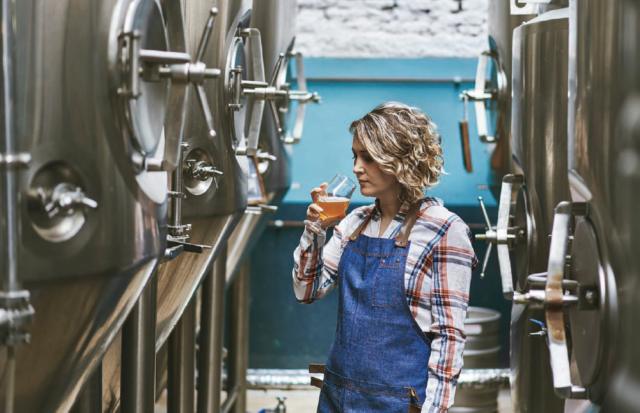

 This report contains the results from an entirely new tasting from the drinks business. Called the Autumn Tasting, it’s a drinks competition defined by the time of year when the samples are judged, rather than their source region, style, or base grape variety. While our existing tastings take a snapshot of a particular area, certain styles or a noble grape, this is something different. It’s the antithesis of our other, long-standing competitions, in that there are no restrictions to who can enter: all styles of wine are welcome.
This report contains the results from an entirely new tasting from the drinks business. Called the Autumn Tasting, it’s a drinks competition defined by the time of year when the samples are judged, rather than their source region, style, or base grape variety. While our existing tastings take a snapshot of a particular area, certain styles or a noble grape, this is something different. It’s the antithesis of our other, long-standing competitions, in that there are no restrictions to who can enter: all styles of wine are welcome.

